Recognition of Values of Traditional Villages in Southwest China for Sustainable Development: A Case Study of Liufang Village
Abstract
:1. Introduction
1.1. Research Background
1.2. Literature Review
2. Research Area and Cultural Landscape Theory
2.1. Research Area
2.2. Data Analysis and Interpretation Methods
- (1)
- This study mainly uses the content analysis method to analyze the theme. Based on the literature and preset framework, this paper describes the value, carrier, and related groups of the rural cultural landscape in Southwest ethnic poor areas, redefines the value theme of the rural cultural landscape, and constructs the relationship between value themes.
- (2)
- Drawing lessons from Anselm L. Strauss’s analytical method of grounded theoretical paradigm and using NVivo software, this paper analyzes the in-depth interview data step by step, integrates the coding to extract the main category, and takes the current rural value cognition of various stakeholders as the whole to guide the interpretation of all categories.
- (3)
- Finally, these data are synthesized from the external perspective of the researchers, which are connected with the preset framework to provide a detailed and in-depth analysis and a comprehensive explanation. This paper does not aim to explore the mechanism behind the rural value cognition of the current stakeholders, and therefore, it does not make further theoretical model construction.
2.3. Traditional Villages as Typical Cultural Landscape
3. Recognizing Liufang Village’s Value from the Perspective of Cultural Landscape
3.1. Settlement Landscape of Dong People in the Low and Middle Mountain Valley Area
3.1.1. Location Selection Based on View of Nature
3.1.2. Village Pattern with Typical Dong Characteristics
3.1.3. Residential Construction Adapting to Nature and Society
3.2. Agricultural Landscape and Activities of Dong People under Traditional Rice Farming
3.2.1. Traditional Rice Farming and “Rice–Fish–Duck” Ecosystem
3.2.2. Diet Structure of Dong Nationality under Rice Culture
3.2.3. Cultural Activities Based on Traditional Agriculture
3.3. Spiritual Landscape of Dong People’s Beliefs, Systems, and Customs
3.3.1. Nature Worship and Landscape Representation
3.3.2. Ancestor Worship and Landscape Carrier
3.3.3. “Sa” Worship and Landscape Construction
3.3.4. Glutinous Rice Worship and Embodiment
4. Cognition of Liufang Village’s Value by Local People
4.1. Interviewee and Value Cognitive Consensus
4.1.1. Interviewee and Content
4.1.2. Concept Extraction and Coding
4.1.3. Cognitive Consensus
4.2. Discussion of Value Cognition
4.2.1. Traditional Culture and Landscape Construction
4.2.2. Tourism Development Opportunities and Challenges
- Accommodation issues
- Lack of talents
- Financial difficulties
- Cultural confidence is not enough
5. Conclusions
Author Contributions
Funding
Institutional Review Board Statement
Informed Consent Statement
Data Availability Statement
Acknowledgments
Conflicts of Interest
References
- Wang, X. Practice and reflection on the value identification and integrated protection of traditional villages. J. Southwest Univ. Natl. Humanit. Soc. Sci. Ed. 2013, 34, 156–160. [Google Scholar]
- Tu, L.; Zhao, P.; Zhang, C. Theory of conservation of traditional villages. Urban Dev. Stud. 2016, 23, 118–124. [Google Scholar]
- UNESCO World Heritage Centre. Operational Guideline for the Implementation of the World Heritage Convention; UNESCO World Heritage Centre: Paris, France, 2015. [Google Scholar]
- ICOMOS-IFLA. Principles Concerning Rural Landscape as Heritage. In Proceedings of the 19th ICOMOS General Assembly, New Delhi, India, 11–15 December 2017. [Google Scholar]
- Law of the People’s Republic of China on the protection of Cultural Relics. Available online: http://www.npc.gov.cn/wxzl/gongbao/2015-08/10/content_1942927.htm (accessed on 10 August 2015).
- List of Chinese Traditional Villages. Available online: http://www.chuantongcunluo.com/index.php/home/gjml/gjml/wid/585.html (accessed on 17 December 2012).
- Opinions of the CPC Central Committee and the State Council on Implementing the Rural Revitalization Strategy. Available online: http://www.gov.cn/zhengce/2018-02/04/content_5263807.htm (accessed on 4 February 2018).
- The CPC Central Committee and the State Council Issued “Rural Revitalization Strategic Planning (2018–2022)”. Available online: http://www.gov.cn/zhengce/2018-09/26/content_5325534.htm (accessed on 26 September 2018).
- Principles for the Conservation of Heritage Sites in China. Available online: http://www.icomoschina.org.cn/uploads/download/20150422100909_download.pdf (accessed on 22 April 2015).
- Evaluation Index System of China’s Famous Historical and Cultural Towns (Villages) (Trial). Available online: http://www.mohurd.gov.cn/wjfb/201301/W020130129031404.doc (accessed on 17 January 2013).
- Evaluation and Identification Index System of Traditional Villages (Trial). Available online: http://www.mohurd.gov.cn/wjfb/201208/t20120831_211267.html (accessed on 22 August 2012).
- Xu, H.; Sun, Y. Estimating value and strategy of travel exploitation of Nanning traditional villages. Resour. Dev. Mark. 2010, 26, 849–851+772. [Google Scholar]
- Lu, K.; Hu, F. Analysis of the comprehensive and diversified value of traditional villages and their living inheritance. Fujian Forum Humanit. Soc. Sci. Ed. 2016, 12, 115–122. [Google Scholar]
- Guo, Q. Function and value of traditional village in Liangbao village, Hongya village in Longde, Ningxia. Soc. Sci. Ningxia 2017, 4, 220–224. [Google Scholar]
- Wang, Y. Value cognition of traditional settlement in ancient Huizhou. Anhui Archit. 2017, 24, 63–66. [Google Scholar]
- Nie, X.; Zhang, Y.; Sun, L.; Zhai, Y.; Liu, B. Research on traditional village types and value cognizance: Shijiazhuang: Hebei province example. Planners 2015, 31, 198–202. [Google Scholar]
- Guilfoil, J. Determining significance in landscapes. J. Cult. Res. Art Educ. 2004, 22, 45–56. [Google Scholar]
- Backhaus, N.; Reichler, C.; Stremlow, M. Conceptualizing landscape: An evidence-based model with political implications. Mt. Res. Dev. 2008, 2, 132–139. [Google Scholar] [CrossRef] [Green Version]
- Barber, L.B. Making meaning of heritage landscapes: The politics of redevelopment in Halifax, Nova Scotia. Can. Geogr. 2013, 1, 90–112. [Google Scholar] [CrossRef]
- Schein, R.H. The place of landscape: A conceptual framework for interpreting an American scene. Ann. Assoc. Am. Geogr. 1997, 4, 660–680. [Google Scholar] [CrossRef]
- Acevedo, M.F.; Callicott, J.B.; Monticino, M.; Lyons, D.; Palomino, J.; Rosales, J.; Delgado, L.; Ablan, M.; Davila, J.; Tonella, G.; et al. Models of natural and human dynamics in forest landscapes: Cross-site and cross-cultural synthesis. Geoforum 2008, 39, 846–866. [Google Scholar] [CrossRef]
- Miller, A.M. Davidson-Hunt, I. Fire, agency and scale in the creation of aboriginal cultural landscapes. Hum. Ecol. 2010, 38, 401–414. [Google Scholar] [CrossRef]
- Benediktsson, K. “Scenophobia”, geography and the aesthetic politics of landscape. Geogr. Ann. Ser. B Hum. Geogr. 2007, 89, 203–217. [Google Scholar] [CrossRef]
- Myers, G. “Where are you from?”: Identifying place. J. Socioling. 2006, 3, 320–343. [Google Scholar] [CrossRef] [Green Version]
- Ken, T.; Lennon, J. Cultural Landscapes: A Bridge Between Culture and Nature? Int. J. Herit. Stud. 2011, 17, 537–554. [Google Scholar]
- Brown, S. World Heritage and Cultural Landscapes: An Account of the 1992 La Petite Pierre Meeting. Herit. Soc. 2018, 11, 19–43. [Google Scholar] [CrossRef]
- Bureau of housing and urban rural development of Liping County; Guangzhou Yacheng Planning and Design Institute Co., Ltd. Protection and Development Planning of Traditional Villages in Liufang Village, MaoGong Township, Liping County (2013–2020); Guangzhou Yacheng Planning and Design Institute Co., Ltd.: Guangzhou, China, 2014; pp. 3–31. [Google Scholar]
- Zhao, X. Spatial Cultural Expression of Chinese Living Rural Settlements: A Case Study of Dong Village in Southeast Guizhou; Southeast University Press: Nanjing, China, 2014; pp. 10–11. [Google Scholar]
- Sauer, C.O. The morphology of landscape. Univ. Calif. Publ. Geogr. 1925, 2, 19–46. [Google Scholar]
- Duncan, J.S. The Superorganic in American Cultural Geography. Ann. Assoc. Am. Geogr. 1980, 70, 181–198. [Google Scholar] [CrossRef]
- Han, F. Cultural Landscape—Filling the Gaps between Nature and Culture. Chin. Landsc. Archit. 2010, 26, 7–11. [Google Scholar]
- Li, L.; Dan, W. Spatial framework analysis of ethic village cultural landscape in Guizhou Province: A case study of the first batch of Chinese traditional villages. J. Neijiang Norm. Univ. 2013, 28, 36–40. [Google Scholar]
- Zhang, L. Rediscovery and sharing of beauty: A survey of southwest minority villages. Chin. Cult. Herit. 2013, 6, 32–37. [Google Scholar]
- Yang, Y. Research on Spatial and Temporal Characteristics of Village Cultural Landscape in Northwest Yunnan. Doctoral Dissertation, Tsinghua University, Beijing, China, 2014. [Google Scholar]
- MaoGong District Annals Compilation Leading Group of MaoGong County. MaoGong District Annals; Hunan Jingzhou Printing Factory: Jingzhou, China, 1989; p. 40. [Google Scholar]
- Yu, D. Dong Culture Series: Dong Dwellings; Huaxia Culture and Art Press: Hong Kong, China, 2001; pp. 66–67. [Google Scholar]
- Bureau of housing and urban rural development of Liping County. Archives of Chinese Traditional Villages 522631-024; Ministry of Housing and Urban-Rural Development: Beijing, China, 2001; pp. 23–36. [Google Scholar]
- Wu, Q. The Realm Thearchy: Investigation and Research on Contemporary Ethnic Folk Belief Culture in Guizhou Province; Ethnic Publishing House: Beijing, China, 2007; pp. 103–107. [Google Scholar]
- Feng, Z. Dong Culture Research; Guizhou People’s Publishing House: Guiyang, China, 1999; pp. 5–10. [Google Scholar]
- Li, J.; Krishnamurthy, S.; Roders, A.P.; Wesemael, P. Community Participation in Cultural Heritage Management: A Systematic Literature Review Comparing Chinese and International Practices. Cities 2020, 96, 1–9. [Google Scholar] [CrossRef]
- Wang, J.; Chen, X.; Zhang, L.; Jin, M.; Yu, D. Empowerment for Community-based Tourism in Ethnic Minority Village: A Case Study of Shiyi Qiang Stockaded Village, China. J. Zhejiang Univ. 2021, 48, 107–117. [Google Scholar]


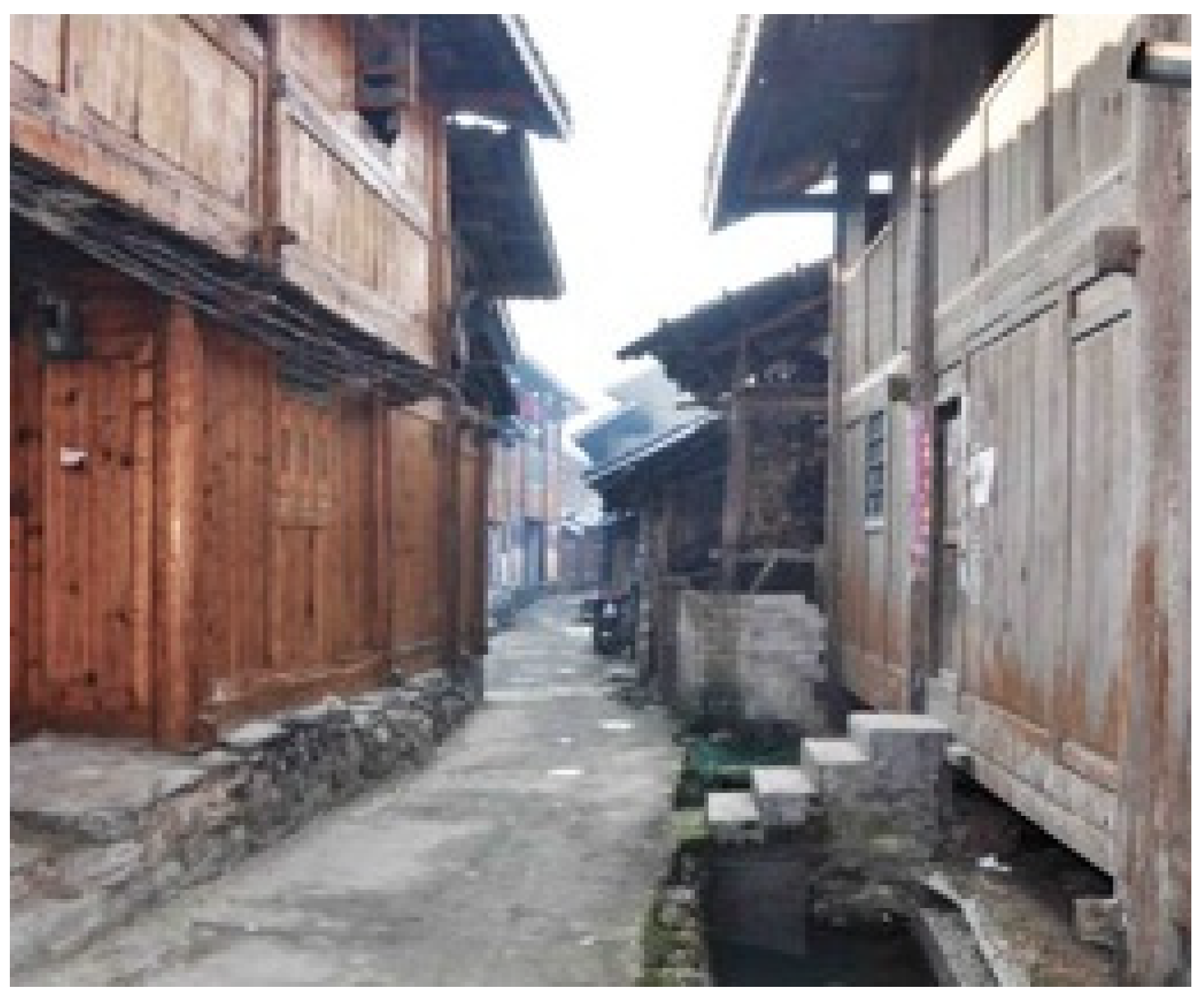

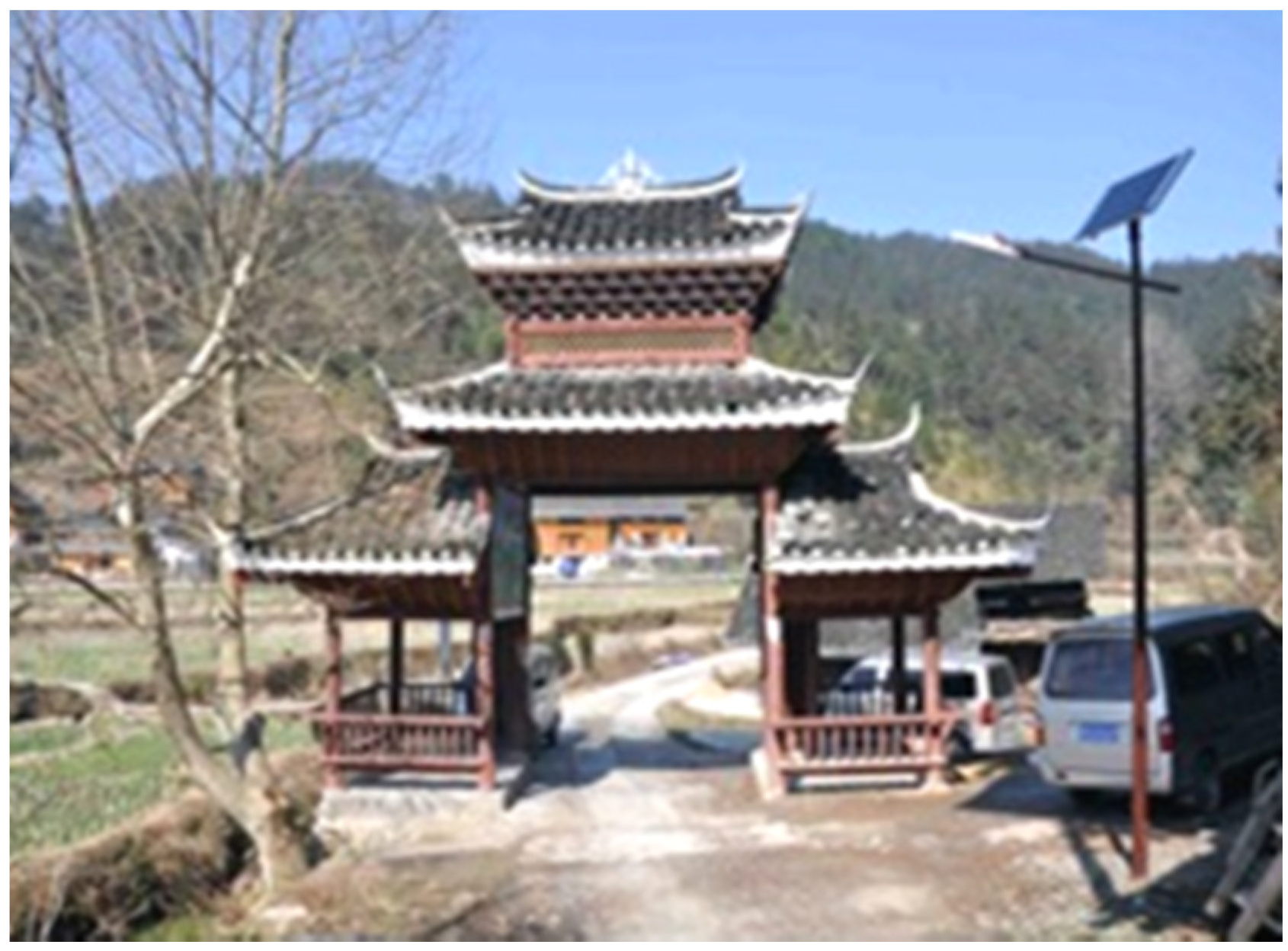

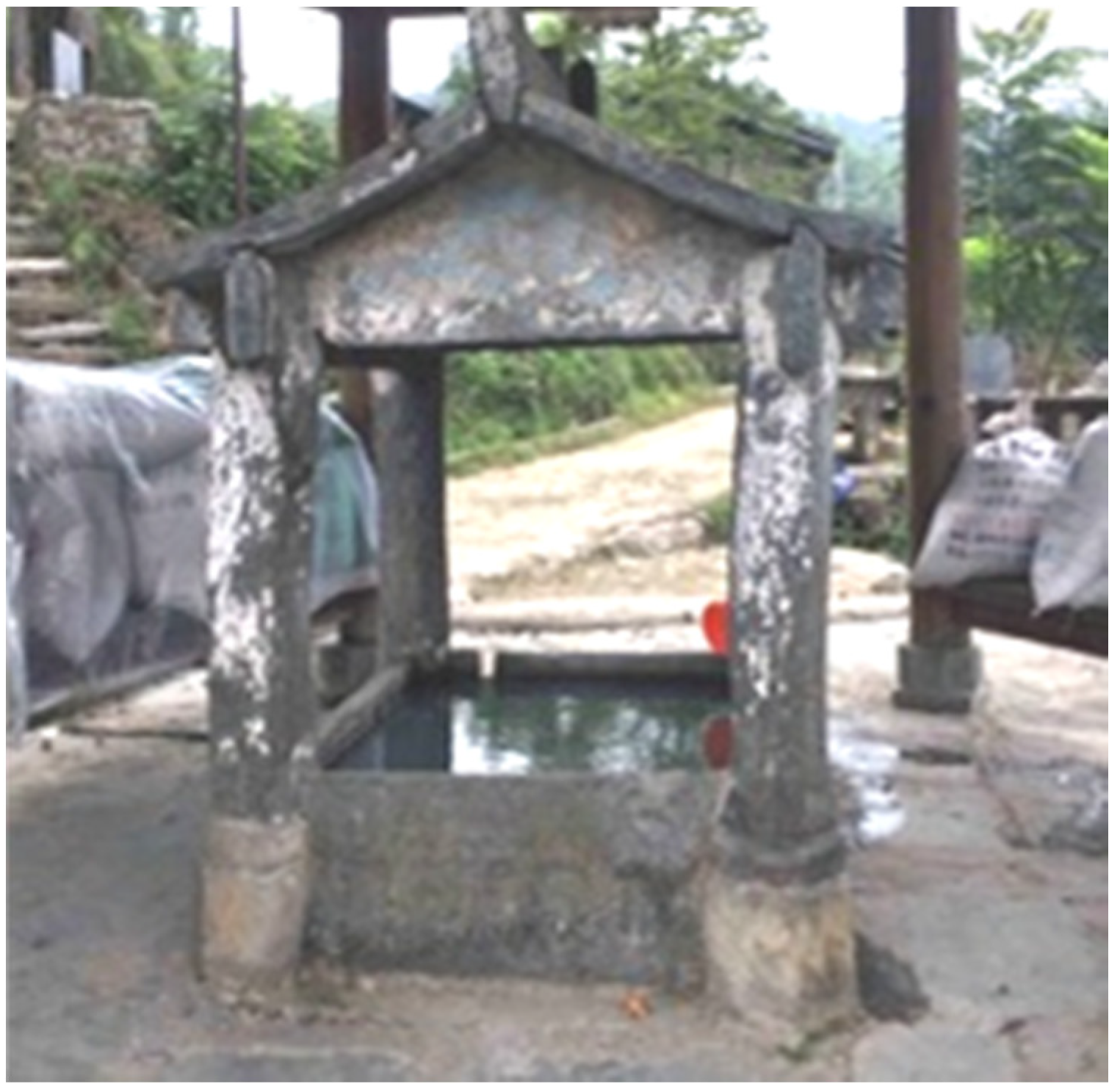
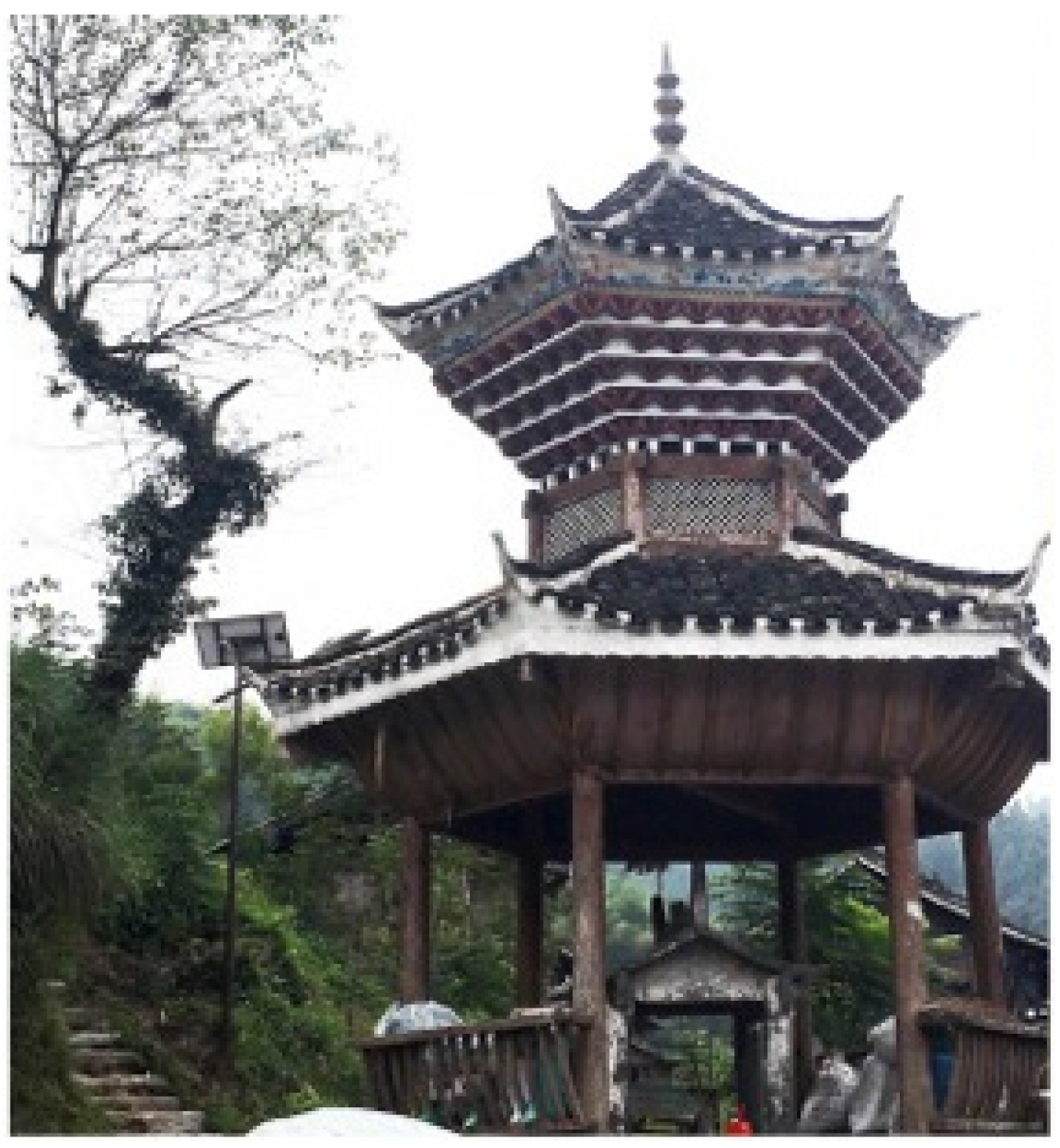

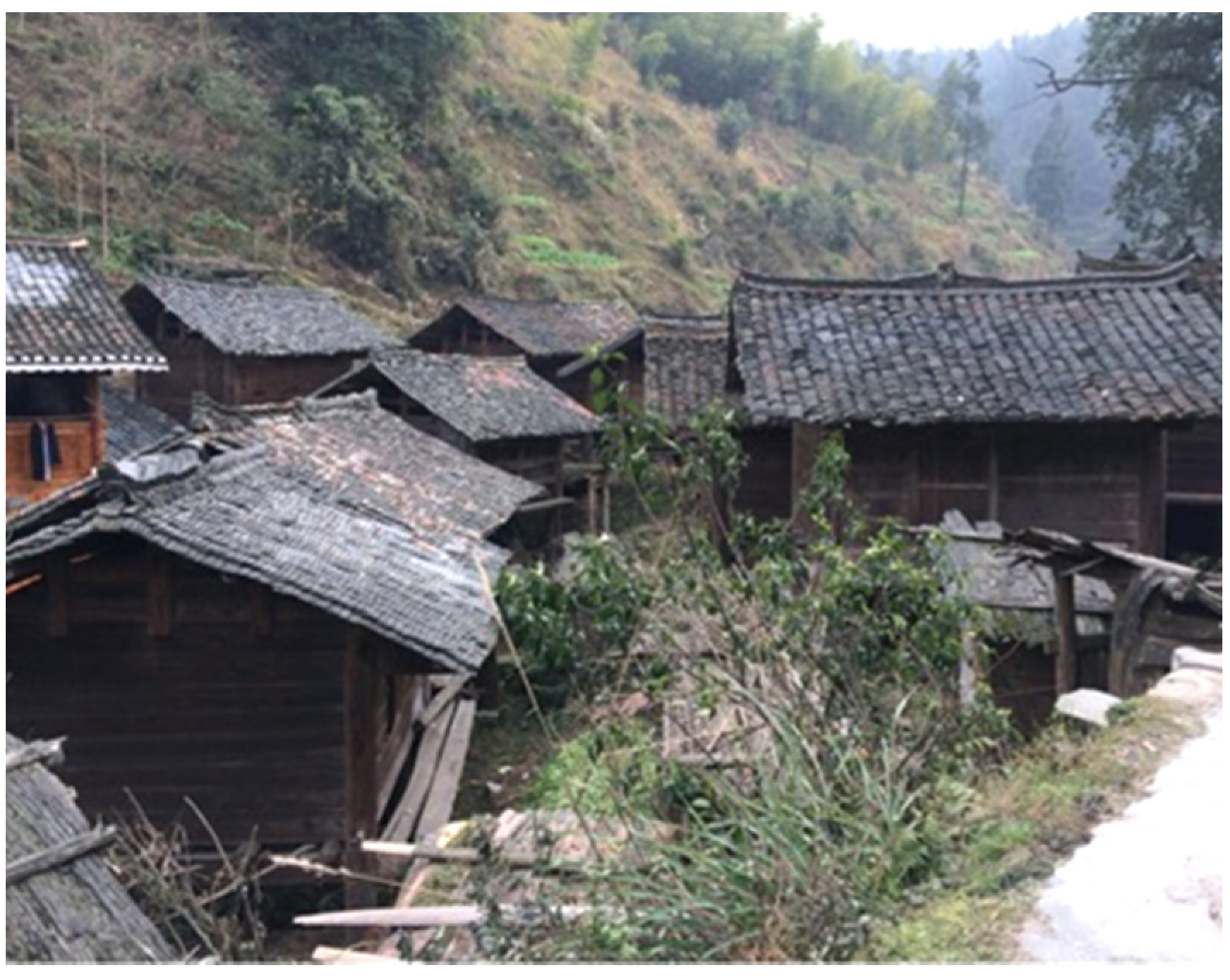
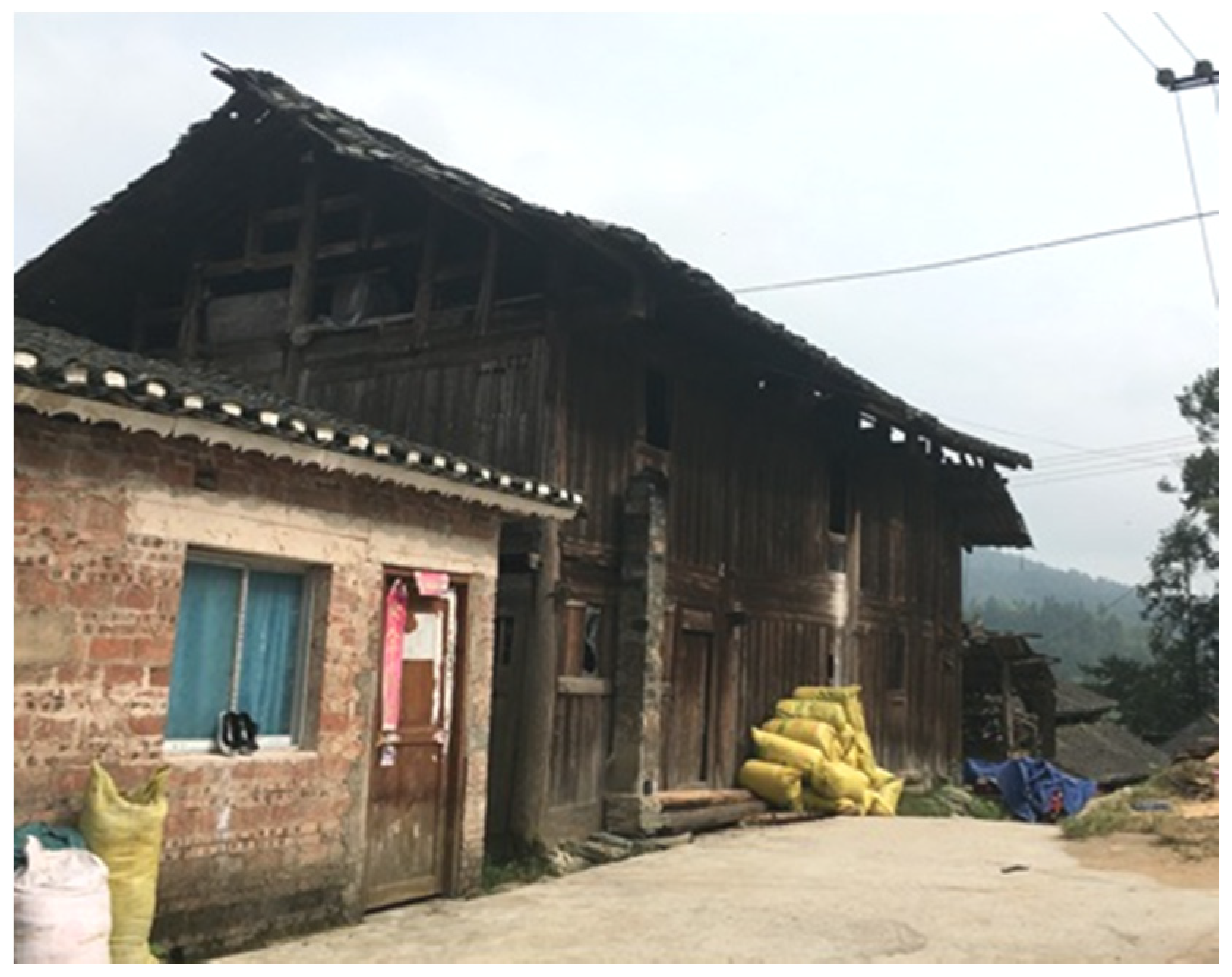

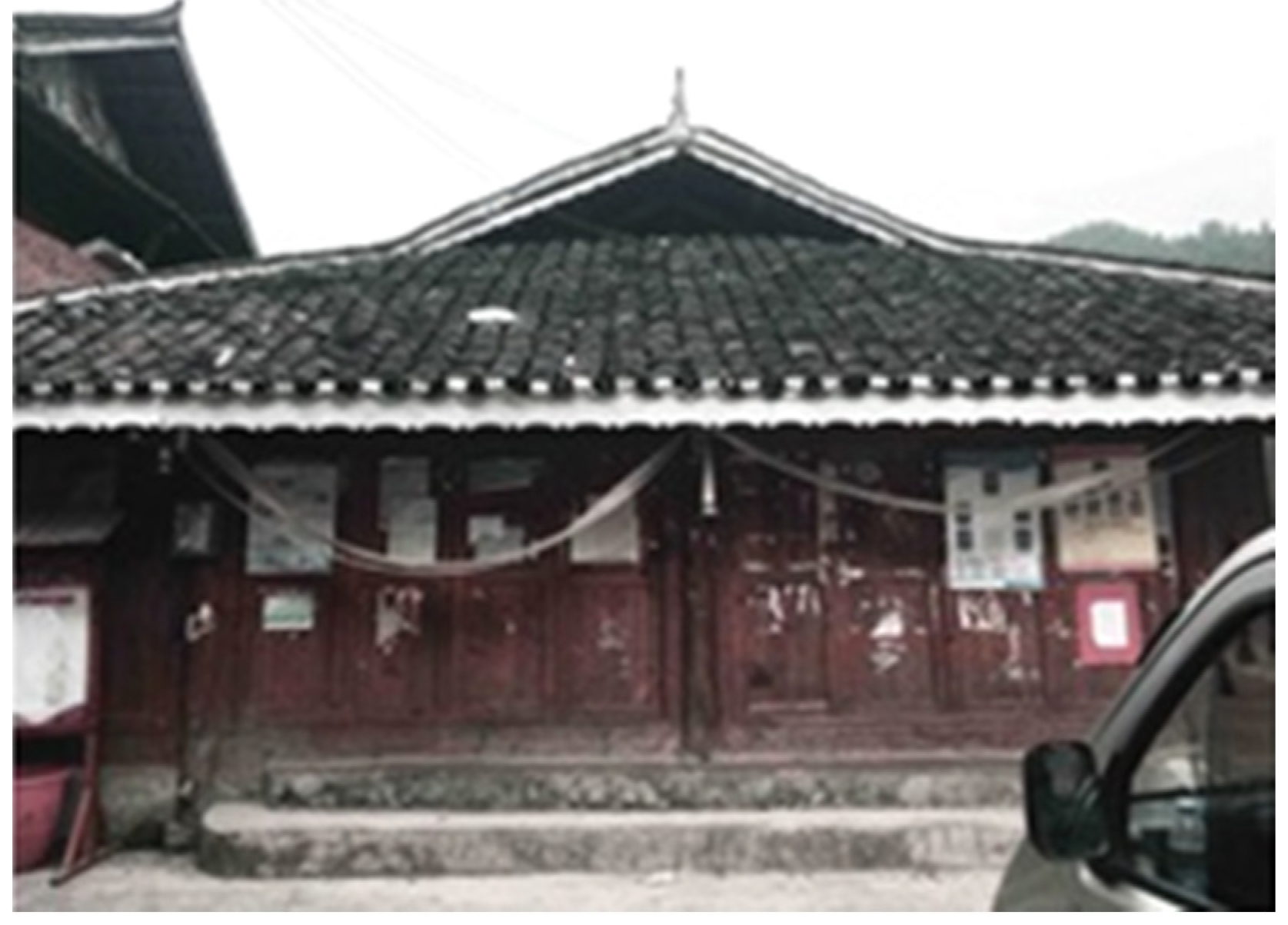
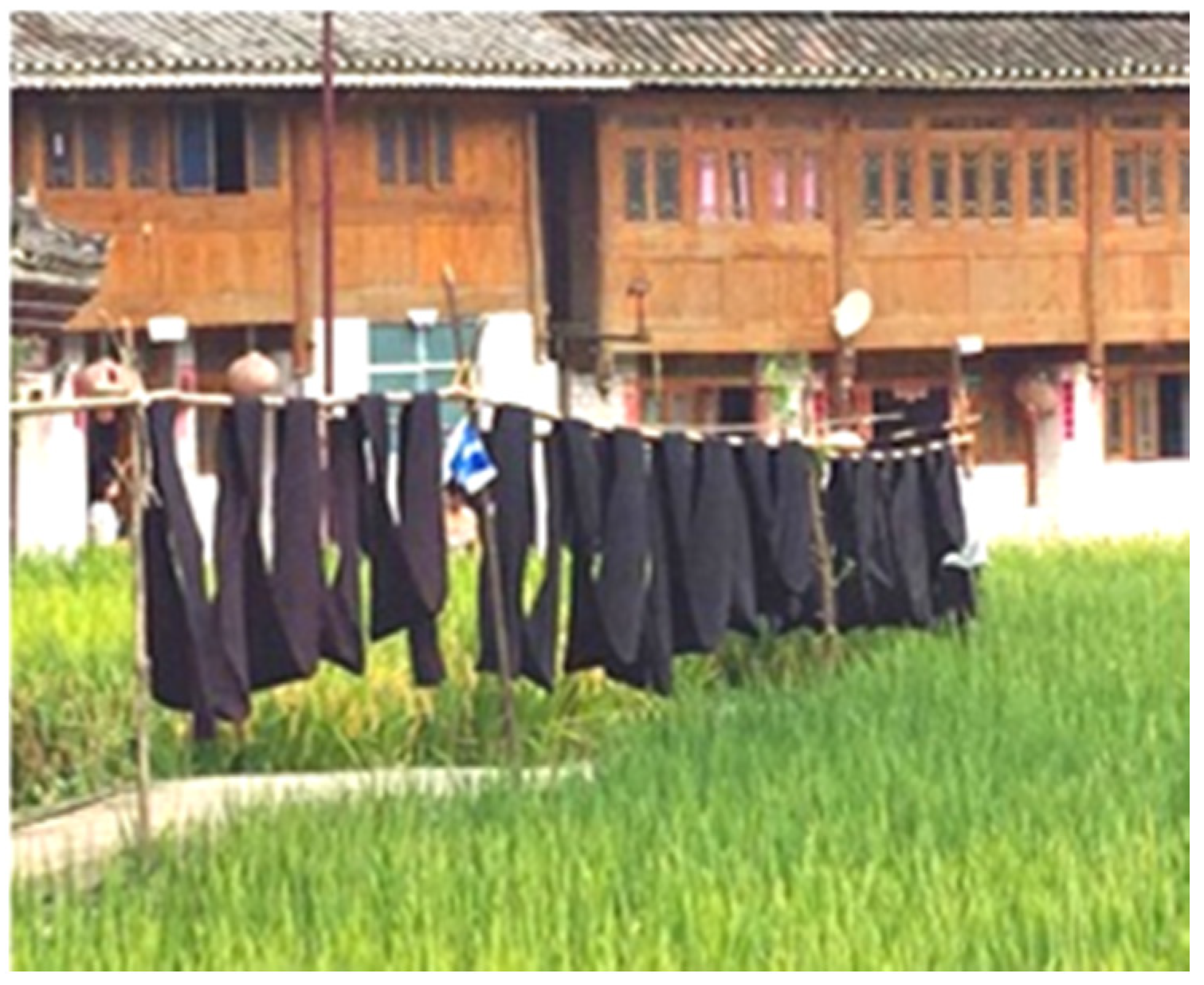

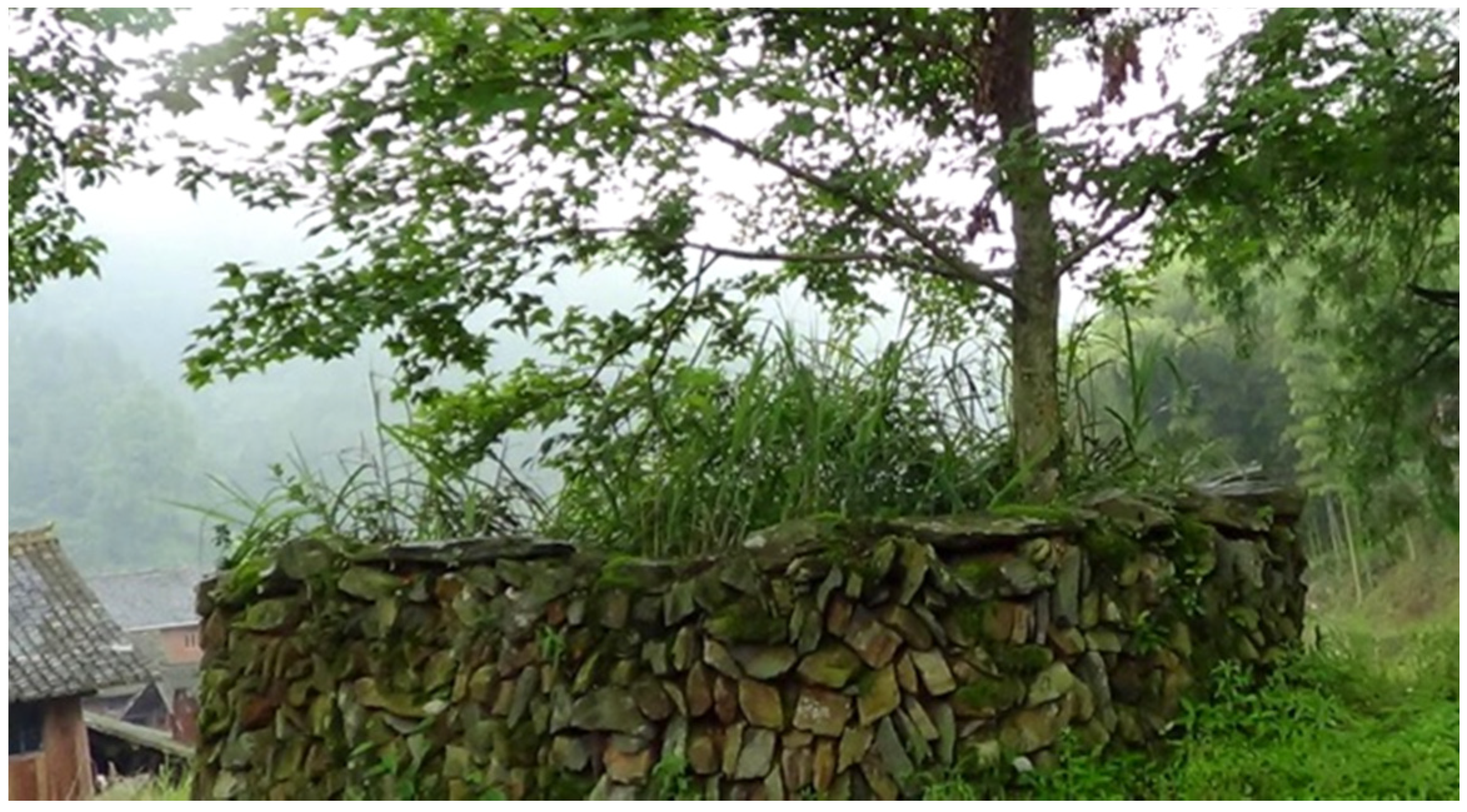
| Category (24) | Main Category (6) | Principal Coding | Selective Coding |
|---|---|---|---|
| A1. Building tradition | Public space landscape of residents inhabiting | Traditional culture and landscape construction | Value cognitive consensus of Liufang village |
| A2. Drum tower | |||
| A3. Stone road | |||
| A4. Bridge | |||
| A5. Barn | |||
| A6. Village Gate | |||
| A7. Pavilion and Well | |||
| A8. Traditional way of rice-fish-duck livelihood | Agricultural landscape and cultural customs | ||
| A9. Traditional festivals | |||
| A10. Stage and Dong opera and song | |||
| A11. Nature worship | Spiritual landscape of belief and worship | ||
| A12. “Sa” worship | |||
| A13. Ancestor worship | |||
| A14. Profound cultural heritage | Great tourism development potential | Tourism development opportunities and challenges | |
| A15. Abundant resources | |||
| A16. Convenient transportation | |||
| A17. Tourism activities | |||
| A18. Good environment | Excellent natural and humanistic environment | ||
| A19. Natural organic food | |||
| A20. Warm and honest people | |||
| A21. Insufficient funds | Traditional culture inheritance and crisis | ||
| A22. Lack of talents | |||
| A23. Villagers’ cultural confidence needs to be strengthened | |||
| A24. Traditional handicraft is declining |
Publisher’s Note: MDPI stays neutral with regard to jurisdictional claims in published maps and institutional affiliations. |
© 2021 by the authors. Licensee MDPI, Basel, Switzerland. This article is an open access article distributed under the terms and conditions of the Creative Commons Attribution (CC BY) license (https://creativecommons.org/licenses/by/4.0/).
Share and Cite
Xu, Q.; Wang, J. Recognition of Values of Traditional Villages in Southwest China for Sustainable Development: A Case Study of Liufang Village. Sustainability 2021, 13, 7569. https://doi.org/10.3390/su13147569
Xu Q, Wang J. Recognition of Values of Traditional Villages in Southwest China for Sustainable Development: A Case Study of Liufang Village. Sustainability. 2021; 13(14):7569. https://doi.org/10.3390/su13147569
Chicago/Turabian StyleXu, Qing, and Jing Wang. 2021. "Recognition of Values of Traditional Villages in Southwest China for Sustainable Development: A Case Study of Liufang Village" Sustainability 13, no. 14: 7569. https://doi.org/10.3390/su13147569
APA StyleXu, Q., & Wang, J. (2021). Recognition of Values of Traditional Villages in Southwest China for Sustainable Development: A Case Study of Liufang Village. Sustainability, 13(14), 7569. https://doi.org/10.3390/su13147569





